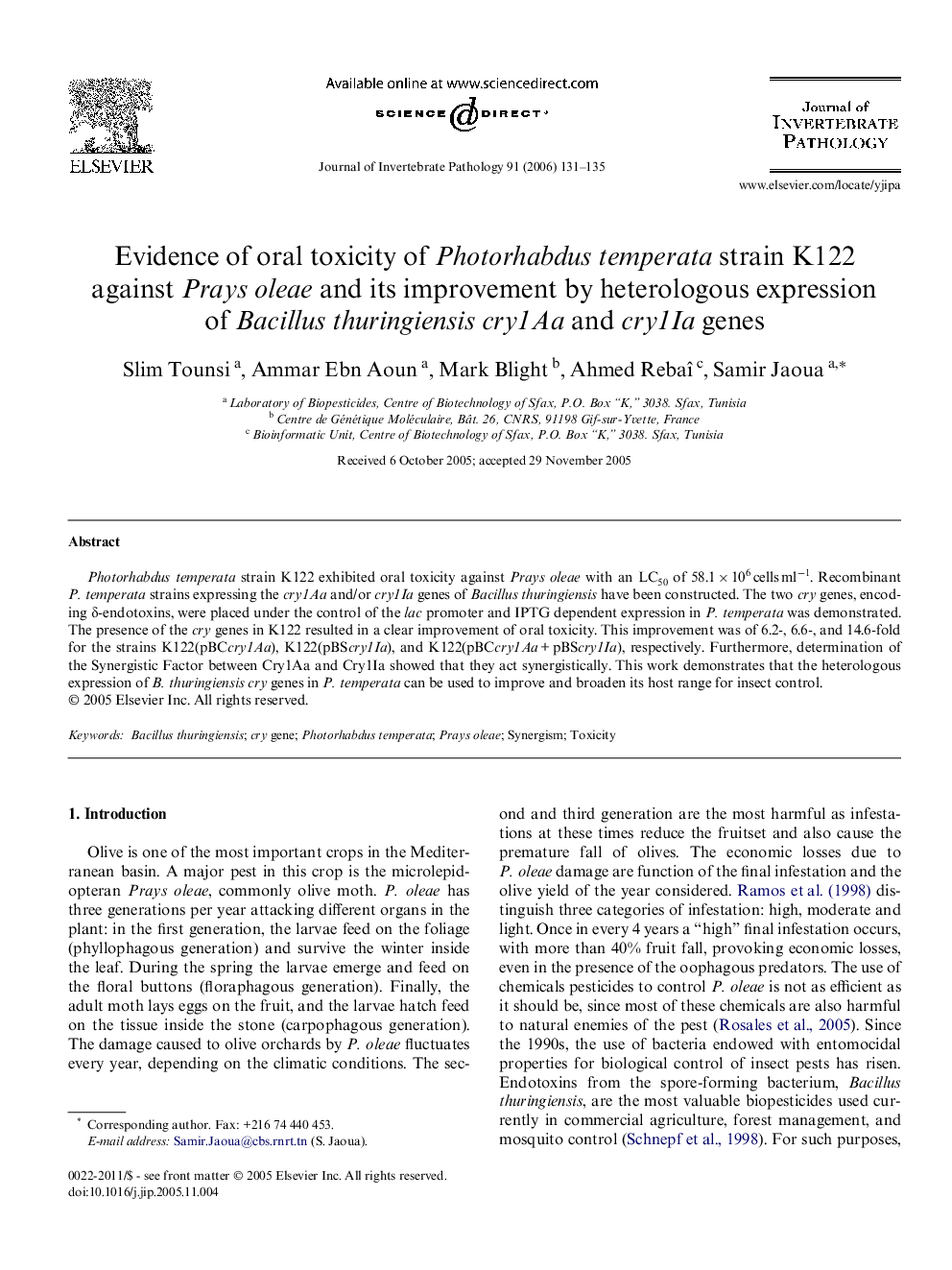| Article ID | Journal | Published Year | Pages | File Type |
|---|---|---|---|---|
| 4558866 | Journal of Invertebrate Pathology | 2006 | 5 Pages |
Photorhabdus temperata strain K122 exhibited oral toxicity against Prays oleae with an LC50 of 58.1 × 106 cells ml−1. Recombinant P. temperata strains expressing the cry1Aa and/or cry1Ia genes of Bacillus thuringiensis have been constructed. The two cry genes, encoding δ-endotoxins, were placed under the control of the lac promoter and IPTG dependent expression in P. temperata was demonstrated. The presence of the cry genes in K122 resulted in a clear improvement of oral toxicity. This improvement was of 6.2-, 6.6-, and 14.6-fold for the strains K122(pBCcry1Aa), K122(pBScry1Ia), and K122(pBCcry1Aa + pBScry1Ia), respectively. Furthermore, determination of the Synergistic Factor between Cry1Aa and Cry1Ia showed that they act synergistically. This work demonstrates that the heterologous expression of B. thuringiensis cry genes in P. temperata can be used to improve and broaden its host range for insect control.
